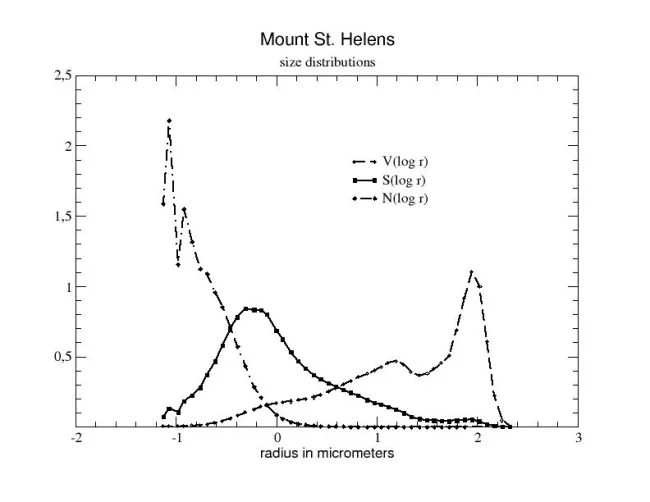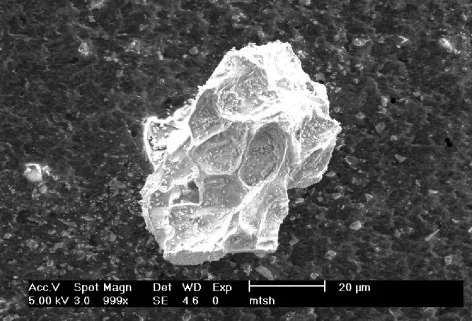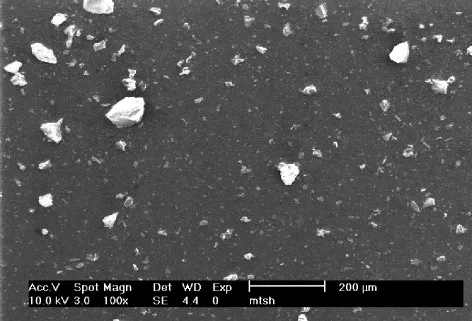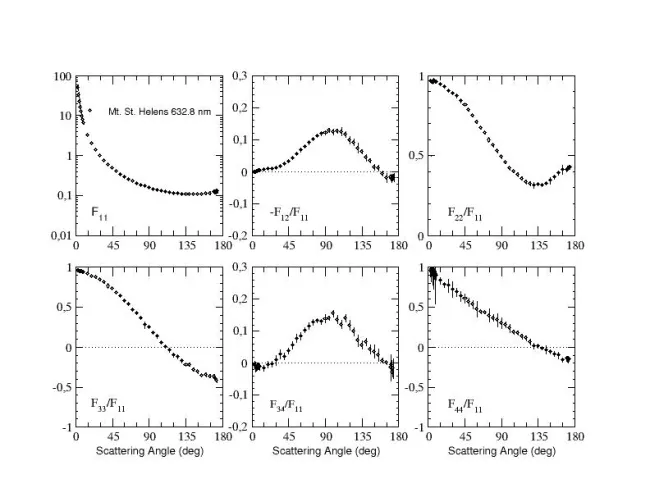
Volcanic ash, Mount St. Helens
Practical significance
Interpretation of remote sensing data. Analogues of other planets' atmospheric dust, and dust in comets, asteroids, and circumstellar shells.
Origin
Mount St. Helens volcano in southwest Washington, USA. The particles were collected 6 km north of the crater after a large eruption on 18 May 1980. The coarse fraction was removed by sieving.
Main constituent
64 wt% glass, plagioclase feldspar, opx, amphibole, magnetite, ilmenite, cpx
Color
Light gray
Particle size Fraunhofer: reff (μm)
4.1
Particle size Fraunhofer: veff
9.5
Size distribution plot:

Size distribution table
SEM/TEM images:


All SEM/TEM images (zip file)
Scattering matrix (1) wavelength in nm
632.80 nm
Scattering matrix (1) table
Scattering matrix (1) plot:

Refractive index
Estimated to be in the range [1.48-1.56] + i0.0018.
Angle range (deg)
[3,173]
Reference/s